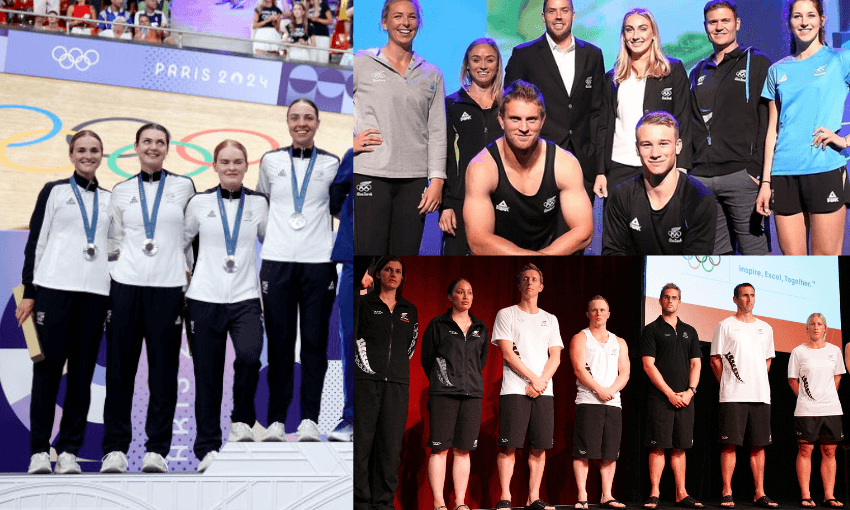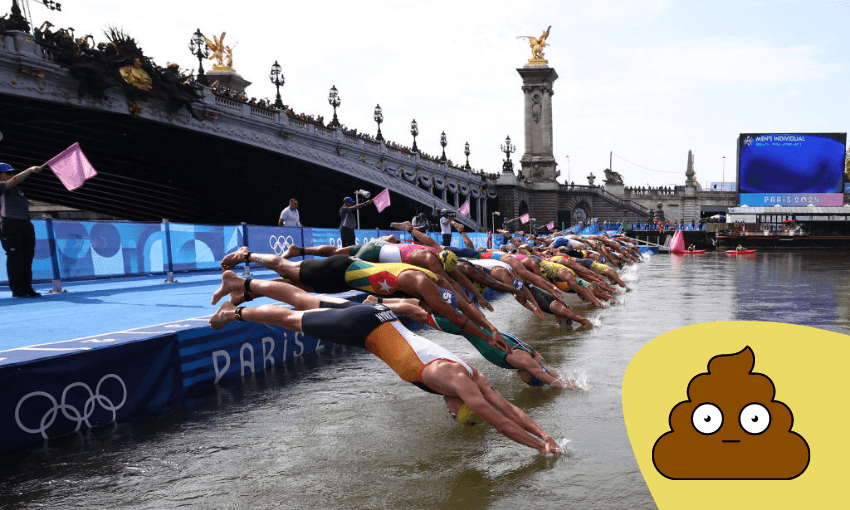Why are we making our winning athletes wear an ill-fitting jacket during the biggest moment of their lives? Mad Chapman rages against our team uniforms.
Imagine this: you’re a world-class athlete who has trained your whole life for the chance to compete for Olympic glory. You don’t make millions from your chosen profession, in fact you barely make thousands, but you’ve committed to the chase of that one dream moment on the podium. On the day, everything comes together and you perform exactly as you hoped – probably even better.
Now you’re on the podium receiving a medal, shaking hands with a random ex-Olympian and smiling through tears for the professional photographers. That photo will be on your wall, in the paper and probably in your funeral booklet. This is the moment of your life. You’ll look back on this moment regularly, the scene seared into your brain.
And what are you wearing? A sheer white tracksuit jacket, cut unfathomably slim, randomly short but not cropped, with no allowance for breasts. Black shapeless pants. You look like a PE teacher.
You deserve more.
You deserve to look comfortable and cool in the biggest moment of your life.
I know we all like to pretend we’re no-frills and just-get-on-with-it but somehow we have taken that pride in our no-fuss approach to mean we have to consistently wear the fugliest uniforms at the Olympics.
To be clear, I am not talking about the competition uniforms. Each sport has different requirements for uniforms and as far as I’m concerned, if it works for the athlete then who cares what the pattern is. But for the other items, particularly the podium uniforms and the opening ceremony outfits, that’s when we should be putting our best foot forward. Right now, we look like the HR department of the Olympics.
If you think I’m being sad to the designer who dreamed up the team uniforms, don’t worry, there wasn’t one. At least not a public one. Our Olympics kit has no named designer attached, and in my experience as a wearer of many basic team uniforms it looks as though the items were picked direct from the manufacturer’s bulk order catalogue. That manufacturer is Peak, a Chinese sportswear manufacturer. Peak is the official apparel partner of the New Zealand Olympic Committee (as well as Basketball New Zealand).
There is nothing inherently wrong with having Peak as an apparel partner, and I’m sure they cut a good deal to get the relationship in the first place, but why aren’t we being even a tiny bit ambitious?
Here is what our uniforms look like. Again, all I see is a school-issued PE uniform.
Here is what Belgium’s uniform looks like, also manufactured by Peak. Evidently someone in the Belgian Olympic committee went “hmmm these options are a bit mud but maybe we can make them look a bit nicer with a single thought about design”.
The theme for the rest of the world this year has been a strong embrace of the cropped bomber jacket, tapered trackpants and thick-soled sneakers. Not us though! Italy also bucked the trend by going for the controversially casual boxy hoodie for its podium outfit and honestly I love it. There was a comfortable vision and they delivered on it.
I genuinely don’t understand why our uniforms are so bad every single time. Here’s 2008.
And here’s 2016.
It makes me think that in all the planning of selections and travel and media, the Olympics team forgets entirely about the uniforms and then at the last minute just sends Peak our name and a silver fern and calls it a day. (I’m sure there is more to it but sadly this is the impression I got.)
No more, I say. We have four years until the Los Angeles Olympics. That’s enough time to consciously uncouple from Peak (sorry Peak but we must, ironically, aim higher). It’s past time we embraced the local talent we have to create an Olympics kit worthy of our athletes.
For the sports element, the clear choice is Canterbury of New Zealand. Want to look no-frills? Get some stubbies into the Olympics village. CCC has been a staple of quality sportswear for decades, it’s time to get them back so our athletes aren’t at risk of hulking out of their little thin jackets every time they fist pump.
But the podium outfits, opening ceremony kits and village wear require some collaboration. Just last year, CCC collaborated with Auckland streetwear label Checks Downtown and pretty much made an Olympics kit without anyone asking. Imagine these items but in a combination of black, white and red (there’s no rule that we have to stick with the arbitrary and boring black and white so yes let’s consider denim too). Comfortable, cool, and crucially, appealing to a standard consumer base.
NZOC doesn’t sell the current Olympic fits because who would buy them? Pairing with local designers may cost more, but being able to sell a full line of Olympics merch? That’s business, baby. I’m no patriot but I would buy some limited edition Olympics jorts and I would pay good money for them too.
It doesn’t have to be CCC and Checks though. A quick survey in the office uncovered any number of excellent local options like:
- PAPA (put the athletes in buffet pants and Geoff jacket for the opening ceremony)
- Rachel Mills (not cheap but has the athleisure cut nailed already)
- Kowtow (the boxy fit is in, lovely breathy materials for summer)
- You Know Clothing (Italy looked like they were wearing YK this year)
The struggle will be to convince local designers and business owners that the Olympics kit is an honour and a privilege and an economic opportunity. I believe all of that to be true, even if it hasn’t been a reality yet.
In 2028, Los Angeles will be filled with beautiful athletes wearing beautiful clothes. I can only hope our athletes arrive in fits worthy of the occasion.





